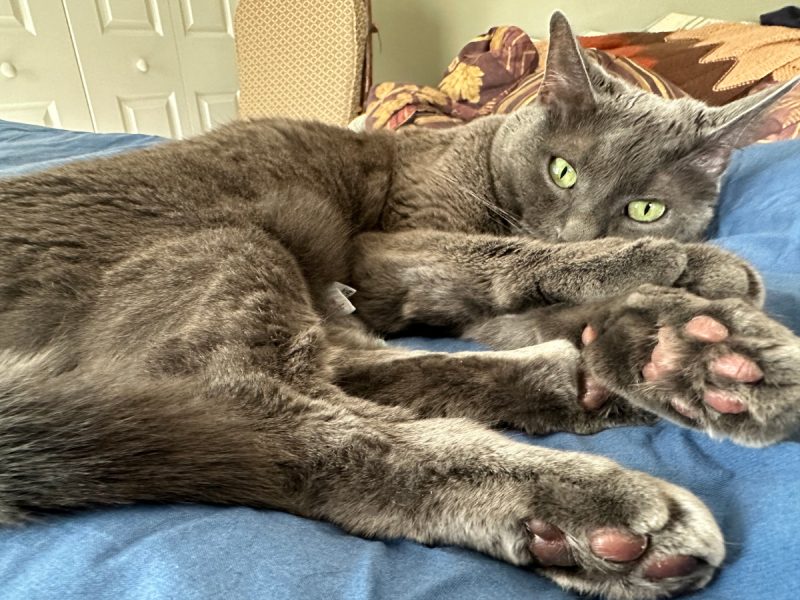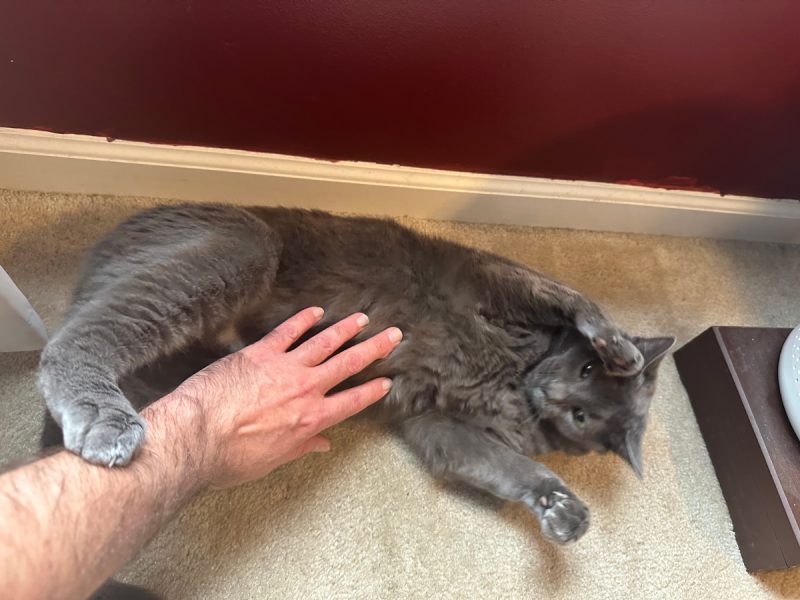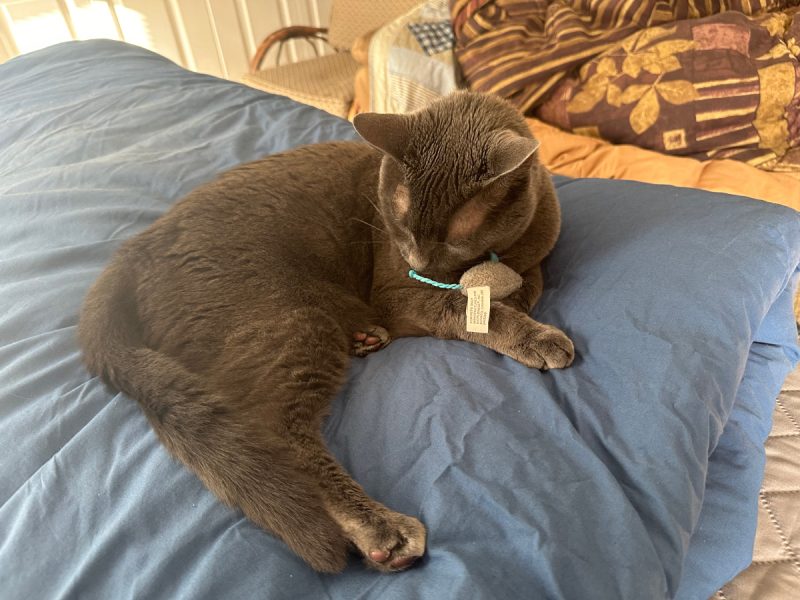Hi, I’m Christopher! Read my introduction to learn more about me and my silly Russian Blue cat, Olga.
Cats’ hunting instincts influence how they play with toys, but their play sessions involve more than just evolutionary advances. House cats are predators, and we often assume that their behavior is predetermined by genetics. It’s hard to argue that they love hunting and playing, but most cats are smart enough to tell the difference between them.
Olga the Huntress
My cat catches and kills only insects in my home; a few years ago, he chased an anole (Anolis carolinensis), pinned it to the floor, and kept it from flowing under my dryer. He didn’t beat him or bite him in half. Olga is occasionally aggressive but does not have a strong urge or desire to torture and eat a small lizard.
I’m not saying he’s more peaceful than most cats because I don’t let him outside to chase birds or mice. He may be a ruthless killer of small animals, but I would never know because I don’t think his play behavior is a good indicator of his hunting skills.
Olga hits her toys and attacks them, but she also hugs them and sometimes falls into a deep trance. If I let him go outside and treat the mice and birds the same way, the animals will hurt him and possibly suffocate after he sleeps with them.

The Toy-Induced Trance
When he purrs and stretches out with a toy on his head, I can rub his belly without tearing my hand. He purrs louder when he grabs his toys, and I think he enjoys it more than cuddling. Without a toy, she would cling to my hand and sink her teeth into it. With the exception of the Siamese cat I own, most cats hate having their guts touched.
I used to think it was just the plastic plant he was holding that sent him to another world. However, catnip rats, paper balls, and silvervines also calm Olga and make her less protective. He doesn’t do it all the time but he seems to enjoy sleeping with his toys. In the morning, I sometimes find a paper ball or a plush mouse at the foot of my bed.

Olga’s Comfort Blanket
When she was little, she would drag her planter around the house and drop it at my feet to encourage me to play with it. He acted like Linus in his tattered blue blanket; like him, he was comforted by his favorite inedible thing. When he’s in a toy trance, I can check his belly for parasites and tumors, but eventually he gets upset and won’t let me brush him.
After Olga’s dental surgery, I thought about giving her a toy to distract her while I wiped the antibiotic out of her mouth with a syringe, but decided against it. He wasn’t very cooperative when he saw the oral medication in my hand, but I didn’t want him to associate one of his toys with a traumatic experience. He’s happy when he’s in a trance, and since he’s usually a grumpy cat, I like to see him in a good mood.

This article is part of a series by Christopher and Olga.


